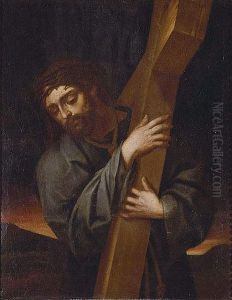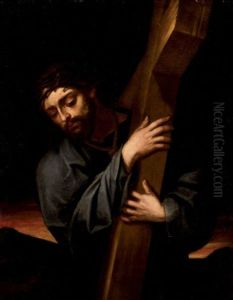Juan Nino De Guevara Paintings
Juan Niño de Guevara was a prominent Spanish painter active during the Baroque period, born in 1643 and passing away in 1721. His life and work were primarily centered in the region of Andalusia, Spain, contributing significantly to the rich tapestry of Spanish Baroque art. Guevara's artistic journey began in his hometown of Málaga, where he was born into a family with artistic ties. This environment nurtured his early interest in painting, leading him to pursue an apprenticeship under a local master, which was a common practice for young artists at the time. Guevara's early works were influenced by the prevailing Baroque style, characterized by dramatic expression, rich coloration, and intense light and shadow, reflecting the Counter-Reformation's emphasis on emotion and piety.
As Guevara's style matured, he became known for his religious paintings, which were highly sought after by local churches and religious orders. His ability to convey deep spiritual narratives through his art made him a key figure in the Andalusian art scene. Guevara's paintings often featured saints, biblical scenes, and the Virgin Mary, executed with a profound sense of emotion and devotion, which resonated with the spirituality of his time.
Despite his significant contributions to Spanish Baroque art, Juan Niño de Guevara's work was somewhat overshadowed by more famous contemporaries such as Murillo and Zurbarán. However, his paintings remain a testament to the vibrancy and depth of the Baroque period in Spain. After his death in 1721, Guevara's oeuvre continued to be appreciated by art historians and collectors who recognized his role in the development of Spanish art. Today, his works can be found in various museums and private collections, offering insight into the religious and cultural milieu of 17th-century Spain.

